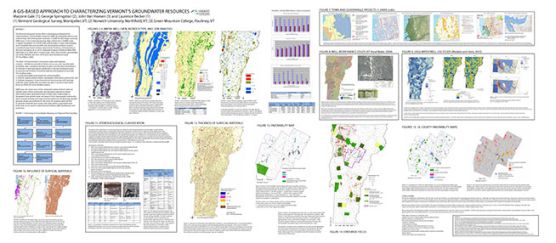Environmental Geology Reports, 1971-1975
The Environmental GeologyReport series are simplified versions of maps of bedrock and surficial materials, construction conditions, groundwater potential, solid waste disposal, sand and gravel reserves, and septic conditions. The series, developed for planning purposes, includes text and regional information.
Env Geology No 1: Geology for Environmental Planning in the Barre-Montpelier Region, Vermont, DP Stewart, 1971, 5 plates plus text

 Bulletins consist of illustrated text, maps and cross-sections. Most are bedrock reports from 1950-1969 at a scale of 1:62,500. Paper copies were lost in the flood in 2011.
Bulletins consist of illustrated text, maps and cross-sections. Most are bedrock reports from 1950-1969 at a scale of 1:62,500. Paper copies were lost in the flood in 2011. 